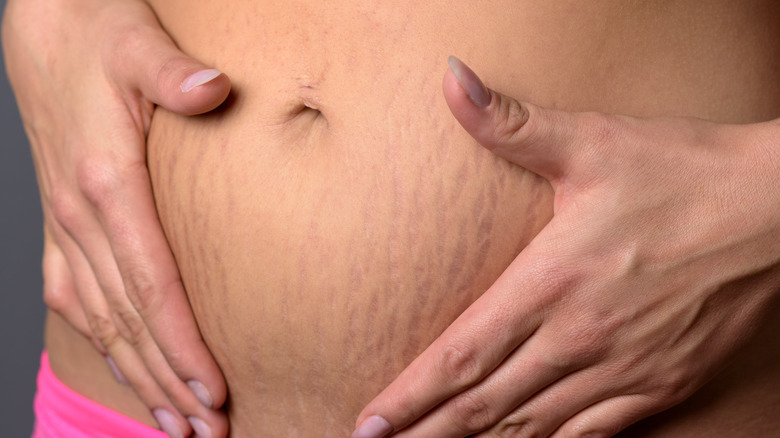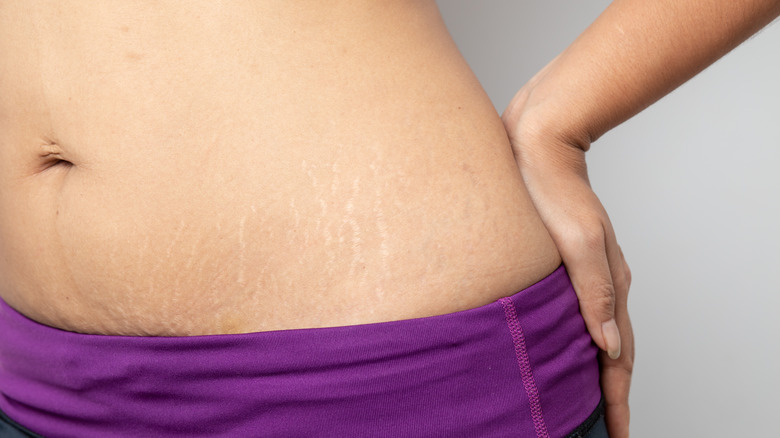The Difference Between White And Red Stretch Marks Explained
Stretch marks are the result of your skin being pulled tight over a short span of time. In short, they are scars, per the American Academy Dermatology Association. Pregnancy is a perfect example of how they can occur, but a growth spurt during youth or quickly growing muscles through bodybuilding can result in stretch marks. Genetics and hormones also play a role in who will develop them. Stretch marks, called striae, generally appear on the abdomen, breasts, thighs, hips, and upper arms, according to the Mayo Clinic.
If you have stretch marks, you may have noticed that they may be either white or red. A red stretch mark is the beginning of any stretch mark. They might even vary from pink to purple to blue. Healthline describes the red stretch marks as "small injuries" to your skin, and the resulting redness is the body's way of dealing with them. The redness means they are fresh, and it is a sign of blood vessels just beneath the surface of the skin.
Blood vessels affect the color of stretch marks
As blood vessels contract over time, red stretch marks fade from red to white. Sometimes, older stretch marks may have a silvery tone. While you might not like the look of them, they are harmless. Some may go away on their own, and others may never go away. The older stretch marks are, the more difficult they are to treat, per Medical News Today.
Some over-the-counter treatments, like collagen therapy and creams that improve the skin's elasticity, claim to help stretch marks, but they do not seem to help everyone. Retinoid creams are more effective at reducing the appearance of red stretch marks. Microdermabrasion and laser therapy might help diminish the look of stretch marks. However, it might take time to see results, and there is no guarantee that the marks will disappear (via Medical News Today). The AADA suggests speaking with a qualified dermatologist if you have questions about how to treat your stretch marks.


